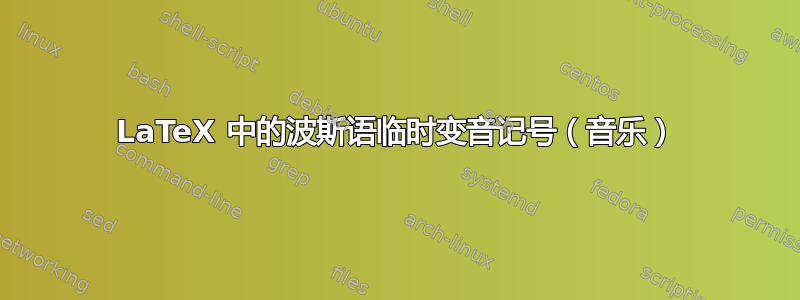
答案1
如果没有最低限度工作示例提供的上下文,很难说这将如何在 OP 的上下文中实现。但是,构造 koron 很简单,只需堆叠 a|和 a即可>。
此 MWE 源自撰写音乐音调
\documentclass{article}
\usepackage{stackengine}
\newcommand\koron{\kern-.7pt\raisebox{-1pt}{\ensurestackMath{%
\stackengine{2.1pt}{\scriptstyle|}{\mkern.7mu\scriptscriptstyle
>}{O}{l}{F}{F}{L}}}\kern-.7pt}
\newcommand\note[1]{\xnote[#1]}
\def\xnote[#1#2#3]{#1\ifx b#2$\flat_#3$\else\ifx#2##$\sharp_#3$\else
\ifx#2\koron\koron$_#3$\else$_#2$\fi\fi\fi}
\begin{document}
\note{Eb3}
\note{A2}
\note{F#4}
\note{F\koron2}
\rlap{\rule[2pt]{20pt}{.4pt}}
$\flat\sharp\koron$
\end{document}
答案2
如果你使用 LilyPond(例如通过\usepackage{lyluatex}),那么网上有一些解决方案。例如,这里有一个简单的想法:LilyPond 中的 koron 符号
如果您对更复杂(自动化)的方法感兴趣,这里还有另一种尝试: Kees van den Doel 的 persian.ly
我还知道一种 Unicode 字体,其中包含了 koron 和 sori 符号:标准音乐字体布局 (SMuFL)




